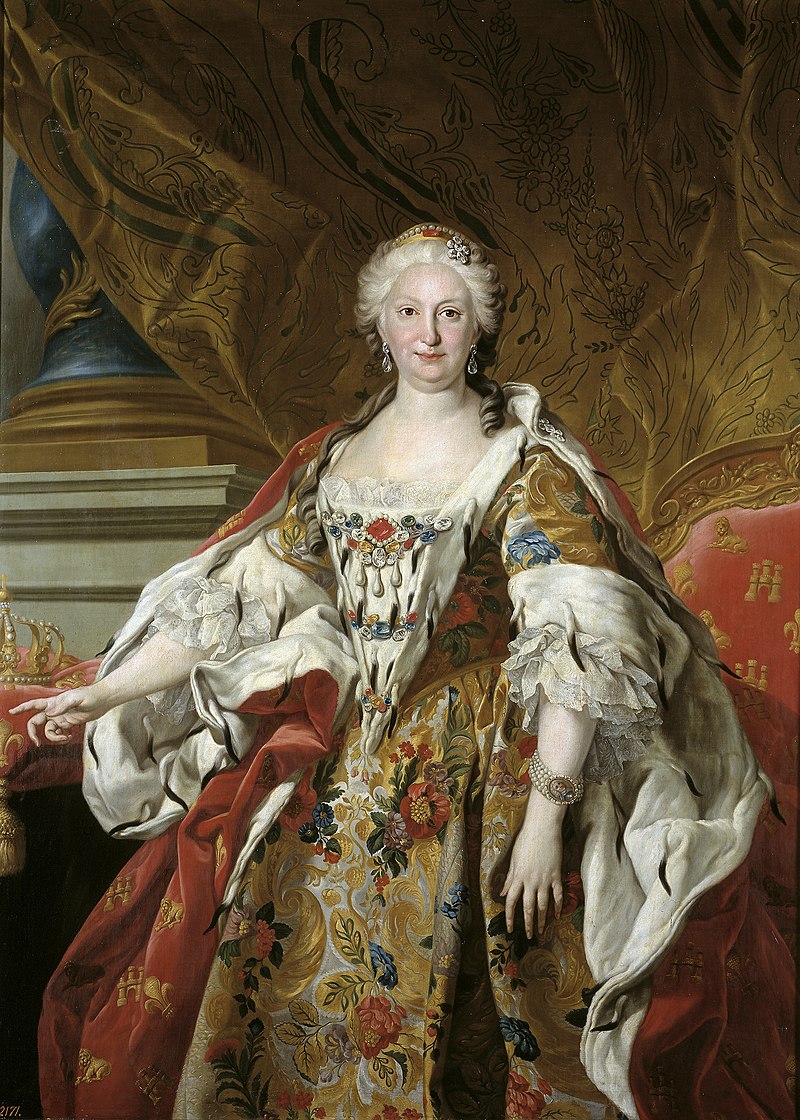© Unofficial Royalty 2025

Elisabeth Farnese, Queen of Spain; Credit – Wikipedia
July 11, 1238 – Birth of Dafydd ap Gruffydd, Prince of Wales in Gwynedd, Wales
Dafydd ap Gruffydd was the last native and independent Prince of Wales from December 11, 1282, until his brutal execution on October 3, 1283, on the orders of King Edward I of England. Dafydd ap Gruffydd married Lady Elizabeth de Ferrers, daughter of William de Ferrers, 5th Earl of Derby. Dafydd and Elizabeth had two sons and one daughter, and all were ill-fated. After Dafydd’s brutal execution, King Edward I of England wanted to make sure that there were no more claimants to the Welsh throne. Dafydd’s two sons, 15-year-old Llywelyn ap Dafydd and 7-year-old Owain ap Dafydd, were imprisoned for the rest of their lives at Bristol Castle in England. Much of the time, they were kept in cages. Dafydd’s young daughter, Gwladys ferch Dafydd, was sent to the Sixhills Convent in Sixhills, Lincolnshire, England, where she spent the rest of her life, dying circa 1336.
Unofficial Royalty: Dafydd ap Gruffydd, Prince of Wales
July 11, 1274 – Birth of Robert I the Bruce, King of Scots at Turnberry Castle in Ayrshire, Scotland
Robert the Bruce is a Scottish national hero and was King of Scots during the First War of Scottish Independence. Robert de Bruis (or Brus), his birth name from his Norman ancestors, was popularly called Robert the Bruce. The Scots refused to tolerate English rule, resulting in the Wars of Scottish Independence, a series of military campaigns fought between Scotland and England, first led by William Wallace and, after his execution, led by Robert the Bruce. Robert the Bruce, as Earl of Carrick and 7th Lord of Annandale, held estates and property in Scotland, a barony and some minor properties in England, and a strong claim to the throne of Scotland. On March 27, 1306, Robert the Bruce was proclaimed Robert I, King of Scots.
Unofficial Royalty: Robert I the Bruce, King of Scots
July 11, 1657 – Birth of Friedrich I, King in Prussia in Königsberg, Duchy of Prussia, later in the Kingdom of Prussia, now Kaliningrad, Russia
Friedrich I, the founder of the Kingdom of Prussia and its first King, reigned from 1701 until 1713. Upon his father’s death in April 1688, Friedrich succeeded him as Friedrich III, Elector of Brandenburg and Duke of Prussia. In November 1700, in exchange for supporting the Holy Roman Empire in the Spanish War of Succession, Leopold I, Holy Roman Emperor agreed to allow Friedrich III, Duke of Prussia, Elector of Brandenburg to make Prussia a kingdom and become its first king.
Unofficial Royalty: Friedrich I, King in Prussia
July 11, 1723 – Birth of Karoline Luise of Hesse-Darmstadt, Margravine of Baden, 1st wife of Karl Friedrich, Margrave of Baden-Durlach, later the first Grand Duke of Baden, in Darmstadt, Landgraviate of Hesse-Darmstadt, now in Hesse, Germany
In 1751, Karoline Luise married the future Karl Friedrich, the first Grand Duke of Baden, and they had four children. Karoline Luise’s numerous collections, including artwork, musical manuscripts, minerals, and other natural history artifacts, later formed the foundation for several museums in Karlsruhe. After falling down some stairs in 1779, her health began to deteriorate. While in Paris, France with her son, she suffered a stroke and died.
Unofficial Royalty: Karoline Luise of Hesse-Darmstadt, Margravine of Baden
July 11, 1766 – Death of Elisabeth Farnese of Parma, Queen of Spain, second wife of King Felipe V of Spain, at the Palacio Real de Aranjuez; buried at the Collegiate Church of the La Granja Palace in San Ildefonso, Spain
After the death of his first wife, Felipe V of Spain married Elisabeth in 1714, and they had six children. Felipe V experienced episodes of manic depression. During several periods, he was unable to handle government affairs, and Elisabeth became the de facto ruler. As he grew older, Felipe V’s mental issues worsened, and Elisabeth became the permanent de facto ruler of Spain. In 1746, Felipe V had a stroke and died a few hours later. Elisabeth’s stepson, Fernando VI, King of Spain, reigned for thirteen years. Fernando’s marriage was childless, and when he died in 1759, Elisabeth’s elder surviving son succeeded his half-brother as King Carlos III of Spain. On July 11, 1766, aged 73, Elisabeth died at the Royal Palace of Aranjuez in Aranjuez, Spain.
Unofficial Royalty: Elisabeth Farnese of Parma, Queen of Spain
July 11, 1866 – Birth of Irene of Hesse and by Rhine, granddaughter of Queen Victoria, at the Neues Palais in Darmstadt, Grand Duchy of Hesse and by Rhine, now in Hesse, Germany
Full name: Irene Luise Maria Anna
Irene was the daughter of Princess Alice of the United Kingdom and Ludwig IV, Grand Duke of Hesse and by Rhine. She married her first cousin, Prince Heinrich of Prussia. Like her own mother, Irene was a carrier of hemophilia and passed it to two of her three sons. They were two of the nine descendants of Queen Victoria who suffered from the disease.
Unofficial Royalty: Irene of Hesse and by Rhine, Princess of Prussia
Unofficial Royalty: Hemophilia in Queen Victoria’s Descendants
July 11, 1867 – Death of Heinrich LXVII, 3rd Prince Reuss of Gera at Schloss Osterstein in Gera, Principality of Reuss-Gera, now in Thuringia, Germany; buried at the Bergkirche St. Marien now in Schleiz, Thuringia, Germany
Upon the death of his unmarried brother Heinrich LXII, 2nd Prince Reuss of Gera, on June 19, 1854, Heinrich LXVII became the 3rd Prince Reuss of Gera. His reign was reactionary to the failed German Revolutions of 1848, which had demonstrated discontent with the traditional, autocratic political structure of the thirty-nine independent states of the German Confederation. Heinrich LXII’s government implemented a reactionary amendment to the constitution limiting the legislature’s power.
Unofficial Royalty: Heinrich LXVII, 3rd Prince Reuss of Gera
July 11, 1914 – Death of Adolf Friedrich V, Grand Duke of Mecklenburg-Strelitz in a private hospital in Berlin, Kingdom of Prussia, now in Brandenburg, Germany; buried in the New Crypt at the Johanniterkirche in Mirow, Grand Duchy of Mecklenburg-Strelitz, now in Mecklenburg-Vorpommern, Germany
In 1908, Adolf Friedrich introduced a ministerial form of government, but continued to meet resistance from the nobility when trying to make further reforms, such as the introduction of a new constitution. Thwarted at every attempt, in 1912 the Grand Duke offered to donate $2.5 million of his own funds to the national treasury and forfeit some of his sovereign rights, in exchange for a new constitution. But again, he was denied by the nobility. In January 1914, just months before his death, he was reported to be the second richest German sovereign, with a personal fortune of $88.75 million (over $2 billion today). In March 1914, the Grand Duke fell ill and underwent an operation in a private hospital in Berlin, Kingdom of Prussia, now in the German state of Brandenburg. He never fully recovered and died at the hospital.
Unofficial Royalty: Adolf Friedrich V, Grand Duke of Mecklenburg-Strelitz
July 11, 1920 – Death of Eugénie de Montijo, Empress of the French, at Liria Palace in Madrid, Spain; buried in the Imperial Crypt at Saint Michael’s Abbey in Farnborough, England with her husband and her son
After Eugénie’s husband, Napoleon III, Emperor of the French, lost his throne, the family went into exile in England, where Eugénie developed a friendship with Queen Victoria. Despite her advanced age, Eugénie was very active during World War I. She supported several hospitals in France and funded a military hospital in Farnborough, England. She also donated her yacht to the British Navy. For her contributions to the war effort, she was made a Dame Grand Cross of the Order of the British Empire in 1919 by King George V. Eugénie died at the age of 94 while visiting relatives at the Liria Palace in Madrid, in her native Spain.
Unofficial Royalty: Eugénie de Montijo, Empress of the French
July 11, 2011 – Death of George Lascelles, 7th Earl of Harewood, son of Mary, Princess Royal and first cousin of Queen Elizabeth II, at Harewood House near Leeds, England; buried at All Saints Church in Harewood, West Yorkshire, England
Lord Harewood had a deep interest in music, especially opera. He was the editor of Opera magazine and the director of the Royal Opera House, Covent Garden. He served as chairman of the board and musical director of the English National Opera and artistic director of the Edinburgh, Adelaide, and Leeds Music Festivals. Lord Harewood was the editor of two books about opera and the author of an autobiography, The Tongs and the Bones. During World War II, Lord Harewood served in the British Army with the Grenadier Guards. He was captured by the Germans and held as a prisoner of war.
Unofficial Royalty: George Lascelles, 7th Earl of Harewood
This article is the intellectual property of Unofficial Royalty and is NOT TO BE COPIED, EDITED, OR POSTED IN ANY FORM ON ANOTHER WEBSITE under any circumstances. It is permissible to use a link that directs to Unofficial Royalty.








